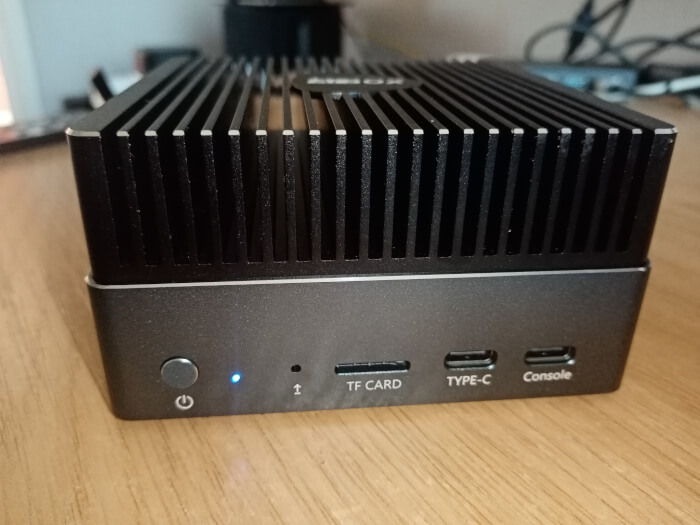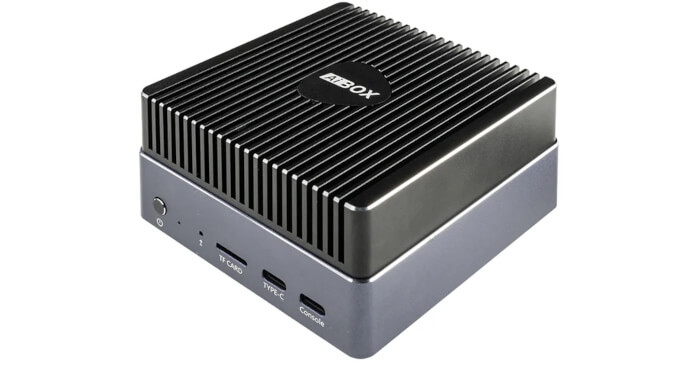This is a multi-part blog looking at the Firefly AIBOX-3588S Mini PC running Linux. This embedded fanless ARM-based computer sports an 8 core Rockchip RK3588S CPU with a maximum clock speed of 2.4GHz. It has an integrated ARM Mali-G10 MP4 quad-core GPU and a built-in AI accelerator NPU providing 6 TOPS of computing power.
The model I’m reviewing comes with 16GB of LPDDR5 RAM and 32GB onboard eMMC storage. It retails for $299 USD on Firefly’s website (this is not an affiliate link). Other configurations are available with a maximum 32GB of LPDDR5 RAM and 256GB eMMC.
The AIBOX-3588S is designed for AI including private AI model deployment, edge computing, data security, smart surveillance, and more. With regard to AI, you can deploy large-scale Transformer-based models and other large language models. There’s also support for RKNN model import/export together with support for various deep learning frameworks including TensorFlow, PyTorch and Caffe. The machine also offers hardware video decoding/video encoding.
I will be looking at AI applications in later articles in this series.
Design
Here’s an image of the front of the AIBOX.

From left to right, there’s a power button, activity light, MaskRom recessed button, microSD card slot (labelled as TF card), a Type-C port (for firmware flashing and which acts as a USB 2.0 host after boot), and Console (debug serial).
At the rear is an HDMI port (maximum 8K@60fps), 2 USB 3.0 ports, and 2 Gigabit ethernet ports although with this particular model only 1 of those ethernet ports is functional. The machine is powered by DC 12V. An image of the rear of the machine is shown on the next page.
The case quality is far superior to a typical mini PC. Many mini PCs are housed in a horrible plastic affair, whereas the AIBOX is made of an industrial grade all-metal aluminum alloy. It reeks of quality!
You’ll notice the top cover dominated with metal fans. These aim to maximise airflow and heat dissipation. That’s essential given the machine uses only passive cooling. That’s right, it’s a fanless machine which runs in complete silence.
I love fanless machines in part because they really help concentration, and completely avoid the issue of fans spinning up and down. And fanless machines are not only essential in an industrial setting. They are great for the home too. With complete silence, you can really enjoy consuming multimedia. Who wants the beauty of Chopin’s Nocturnes spoiled by fan noise?
Next page: Page 2 – Getting Started
Pages in this article:
Page 1 – Introduction / Design
Page 2 – Getting Started
Page 3 – Interrogation of the system
All articles in the series:
| Firefly AIBOX-3588S | |
|---|---|
| Introduction | Introduction to the series and interrogation of the AIBOX-3588S |
| Benchmarks | Benchmarking the AIBOX-3588S Embedded Fanless PC |
| Power | Comparing the AIBOX-3588S power consumption with other SBCs and Mini PCs |
| SSHFS | Access Remote File Systems Over SSH with SSHFS |
| Flatpak | Set up Flatpak to use external disk |
